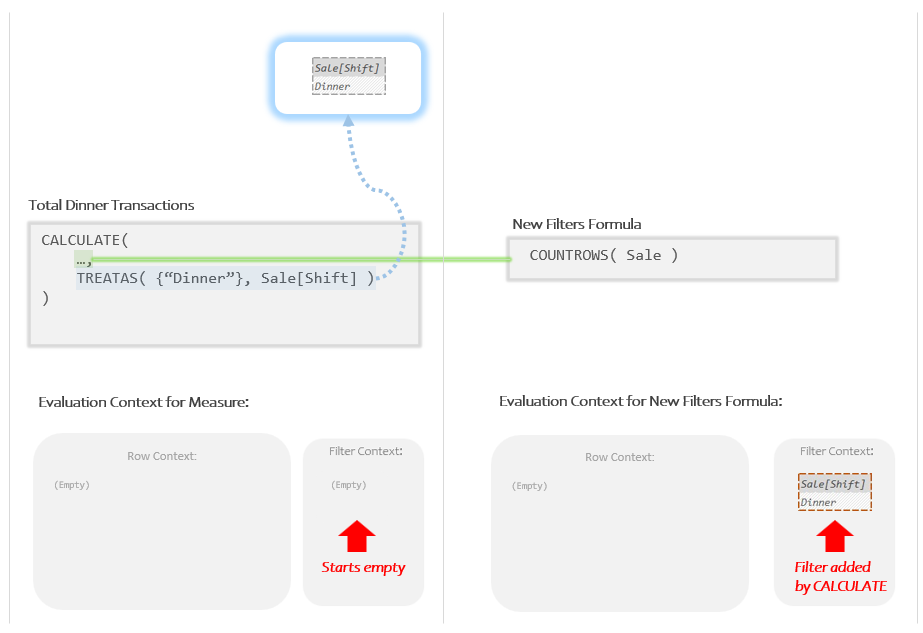-
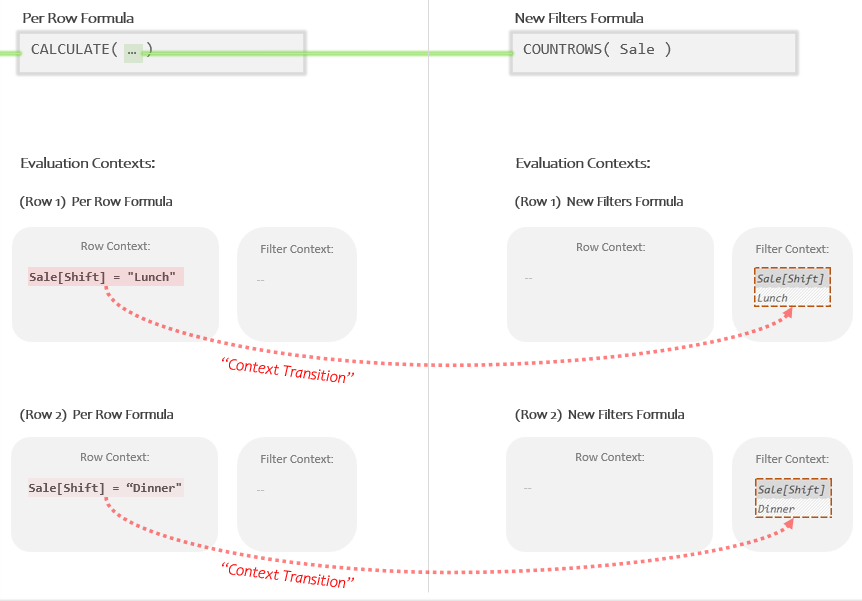
As I’ve mentioned a couple times now, the main job of CALCULATE is to create a new Evaluation Context where filters have been added or removed, and then run whatever has been typed into argument 1 (the “New Filters Formula”) *within* that new Evaluation Context. Essentially running the “New Filters Formula” within a new set…
-
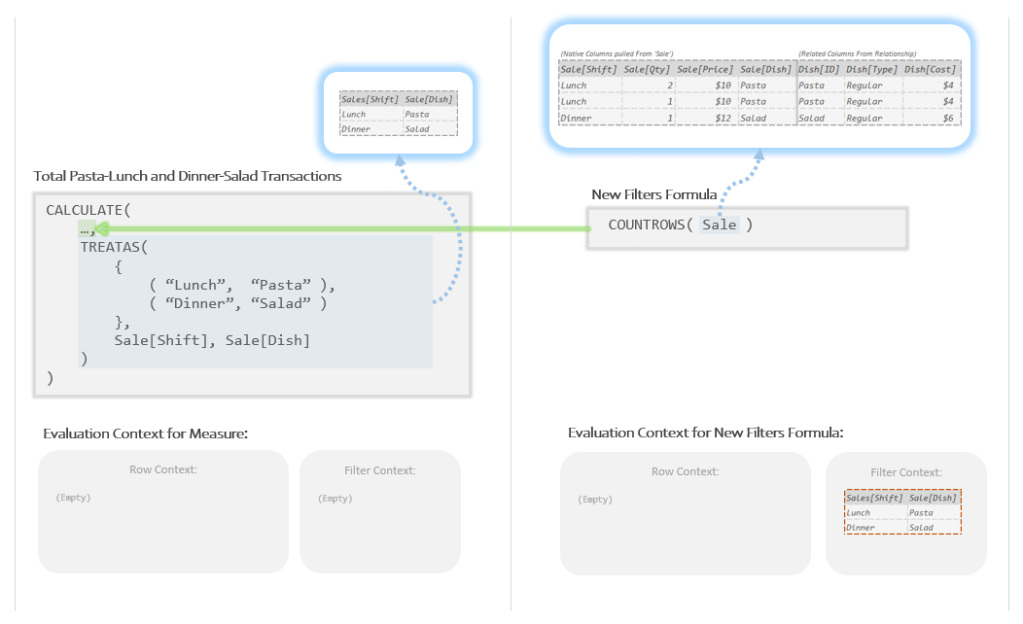
In this quick post we’re going to continue looking at examples of adding basic filters with CALCULATE. I don’t want to get too bogged down in this post, there are few (if any) new concepts here; but seeing multiple examples can be very helpful when encountering tricky new ideas. With that in mind, we’re going…
-
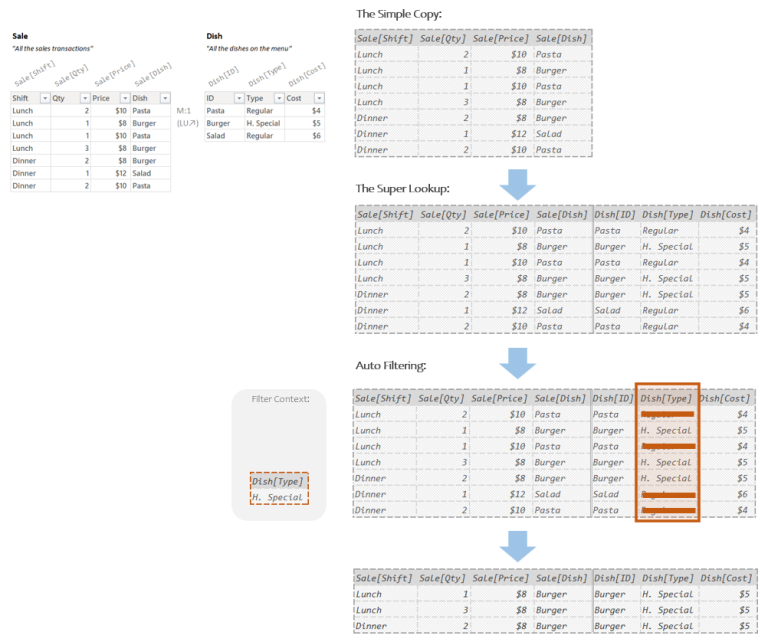
At this point I think we’ve established pretty well that in DAX every sub-formula always runs with two lists in place: a list of all the values of the current row (“Row Context”) and a list of all the current filters (“Filter Context”). These two lists together are called the sub-formula’s “Evaluation Context”. In the…
-
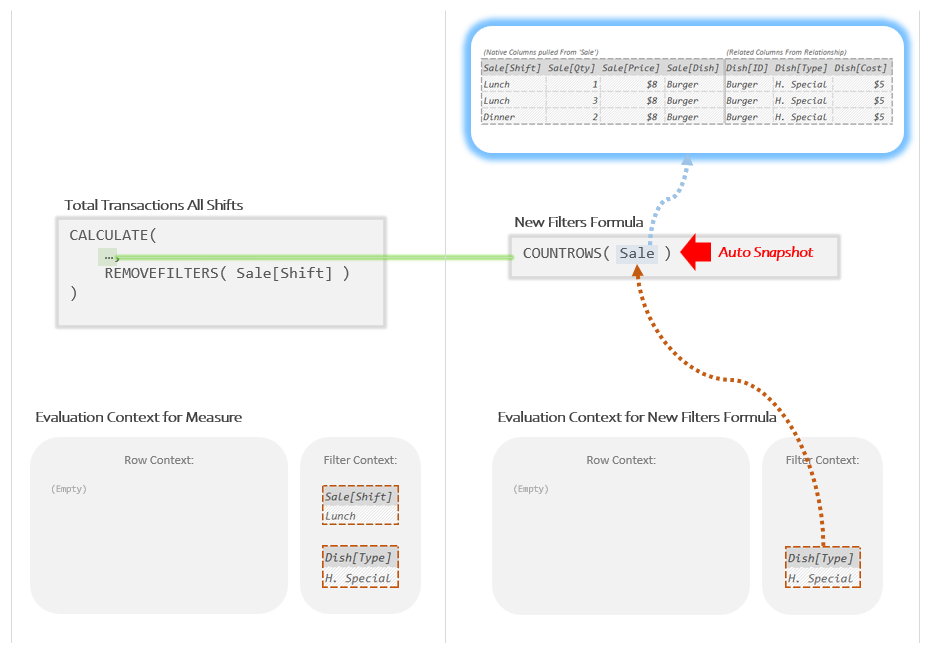
In the last post we learned that in DAX every sub-formula always runs with two lists in place: a list of all the values of the current row (“Row Context”) and a list of all the current filters (“Filter Context”). These two lists together are called the sub-formula’s “Evaluation Context”. These lists exist so that…
-

DAX is a language of sub-formulas; what at first looks like one big formula is usually several sub-formulas chained together. We talked about this last time, and I hope the idea is starting to make sense in your head, even if slowly. And like we talked about last time, the two main types of sub-formulas…
-

DAX is a language of sub-formulas. To a new author, a Measure looks like one big formula; but to a trained DAX expert it’s a chain of interrelated sub-formulas, each of which can be isolated and understood as distinct. While there are sub-formulas all over the place in DAX, most don’t require special training to…
-
In the previous post we learned about the Auto Snapshot why it is helpful to be able to visualize it while writing or reading DAX. That’s all well and good, but how do you do it? I don’t have a pill for you to take, and the reality is that the best tool here is…
-
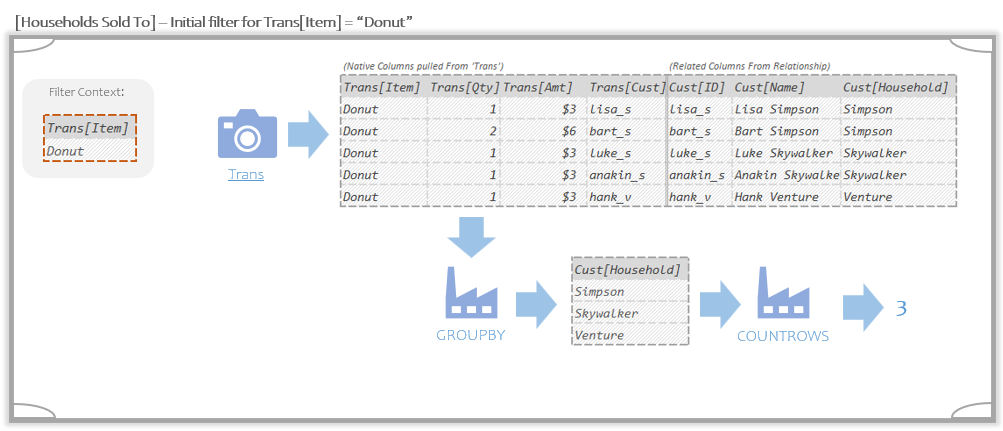
In the last post we looked at how if you can properly understand and visualize the Auto Snapshot, understanding the RELATED function is actually quite simple. The Temp Table produced by the Auto Snapshot has several columns added during the Super Lookup (aka “Table Expansion”). These added columns are classified as Related columns. While these…
-
Subscribe
Subscribed
Already have a WordPress.com account? Log in now.
